It is said that in the old days, when people were too poor to buy glutinous rice, they rolled rice and made it a dish called “Shingoro”. It is a local dish of Minamiaizu Town and Shimogo Town that is made by spreading “Juunen miso” made by mixing ground juunen (egoma), miso, sake, sugar, mirin, etc., which is rolled and crushed glutinous rice, and roasted over a fire.
WHAT IS SHINGORO?
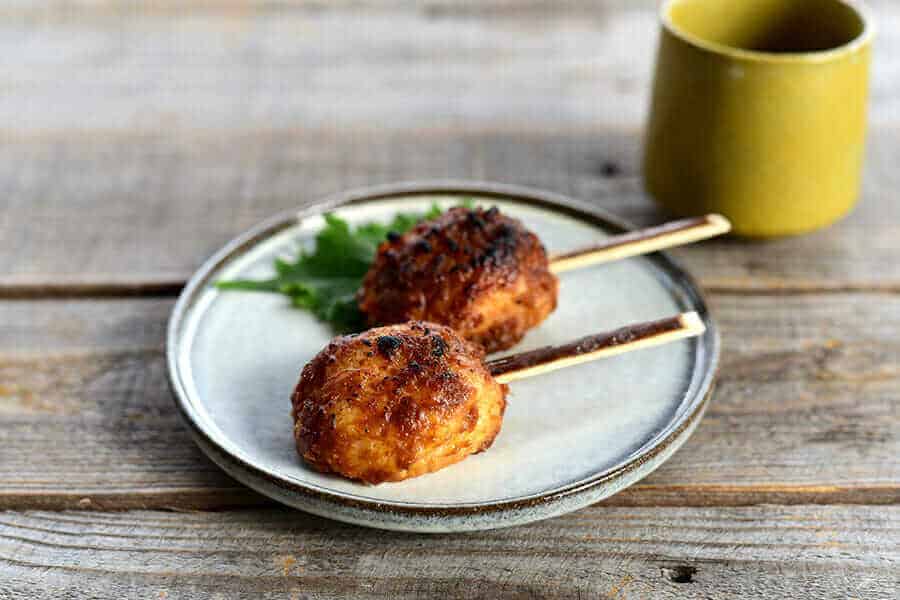
Ever heard about this rice dish? Shingoro is a local dish from Shimogo Town that is handed down in the Minamiaizu area of Fukushima prefecture. It is made of half cooked glutinous rice and coated with “Junen miso” (a mixture of perilla seeds, sugar, miso, sake, mirin, etc.) and grilled over charcoal. In addition, it is stabbed on a skewer and grilled on a charcoal. Perilla is called “Egoma” (エゴマ) in Japan, but in Shimogo they call it junen (じゅうねん), which literally means “ten years”. Basically, it has a meaning that “if you will eat it, you will live ten years longer”
Additionally, It is famous for a family gatherings every year during new rice season!
WHAT IS THE HISTORY OF SHINGORO?
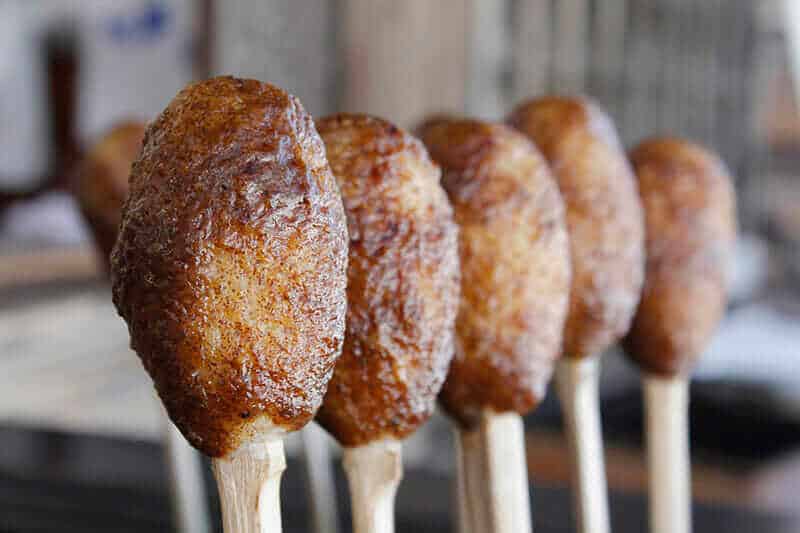
There was a theory about the history of Shingoro. The name “Shingoro” comes from Shingoro who made this dish. A long time ago during Edo period, Shingoro is a poor man who couldn’t afford to prepare rice cakes and pay for an offering to the gods. So, instead he made a new recipe to offer. That is how Shingoro was made. The half cooked glutinous in bamboo skewer are mixed with miso and perilla then grilled perfectly over a charcoal. It became popular in the neighbourhood of Aizu since then it became the local dish of the region.
WHAT ARE THE HEALTH BENEFITS OF EGOMA?
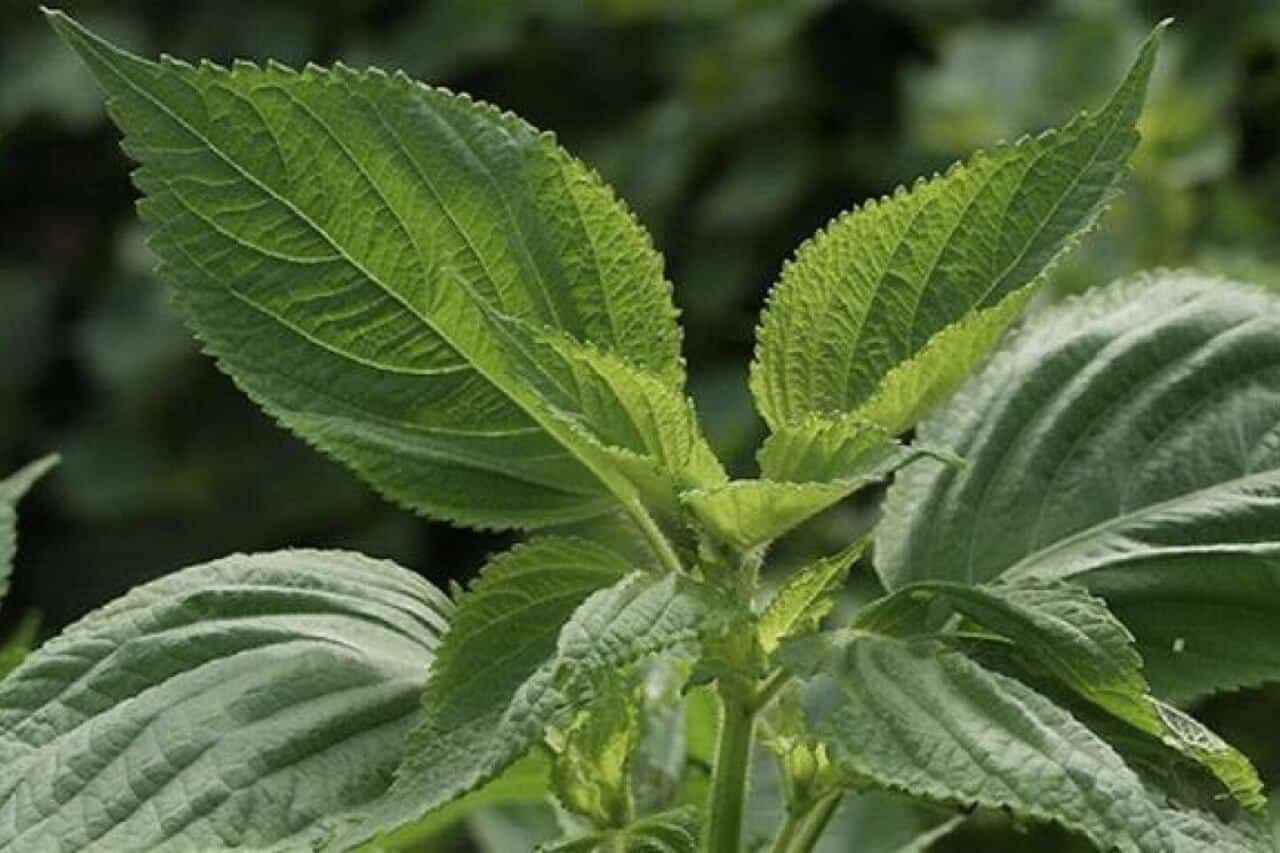
Egoma (エゴマ) is one of the main ingredients of Shingoro. Egoma is a Japanese word for “Perilla”, which is often known as ‘wild sesame’ and can also be turned into oil by pressing. In Shimogo Town, it is called “Junen”. From the word “Jyunen” it literally means “ten years”. This is because it has long been said that eating perilla will make you live ten years longer. By making a Shimogo dish, there’s a mixture called Jyunen Miso. Jyunen Miso is a mixture of Perilla seeds, miso, sake, sugar, etc. In addition, Jyunen Miso is made by Egoma, which has a lots of good health benefits.
Egoma (Perilla) is actually belongs to the mint family . It comes with a unique flavour and are rich in a certain ingredient essential to health. Perilla is rich in a-Linolenic acid. So, what is a-Linolenic acid? It is an essential fatty acid that cannot be produced within the human body and must therefore be acquired through diet. Specifically, it is an omega-3 fatty acid. This fatty acid have various beneficial effects that include a reduced cholesterol level and blood pressure, less severe allergies, the prevention of dementia, and dieting and anti-aging benefits.
Due to rich presence of Omega 3 from Egoma, it helps to prevent cardiovascular problems. Additionally, it serves well as natural antiseptic, anti-inflammatory and helps reduce allergens as well. In general, the nutritional levels of all parts of the Egoma plant are very high. However, the leaves and seeds of Egoma are used for medicinal purposes as for their numerous health benefits.
In addition, egoma is already commonly found in many Japanese dishes like sushi, which in addition to its aromatic components also brings into play its antibacterial qualities. It can actually neutralize the toxins found in raw fish.
WHERE IS FUKUSHIMA PREFECTURE?
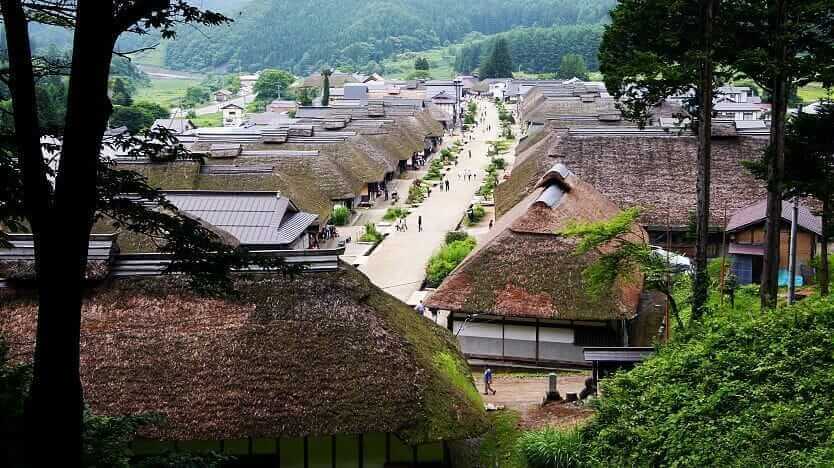
Fukushima is the third largest prefecture after Hokkaido and Iwate prefectures. You can reach Fukushima in just over an hour by shinkansen from Tokyo. Fukushima offers ample of natural beauty, historic sites and leisure activities, including spectacular volcanic landscapes, excellent hot spring waters, outstanding cherry blossom and autumn colour spots. In addition, there are also prominent castle towns, high-quality sake, pleasant ski resorts and Japan’s first ever theme park, the Spa Resort Hawaiians. In addition, there are also other local foods to try in Fukushima such as Shirakawa Ramen and Kitakata Ramen.
HOW TO MAKE SHINGORO?

Firstly, you will need to prepare the main ingredients. These are the rice, perilla seeds, sake, mirin, sugar and miso. Secondly, to make Junen, first fry 30g of perilla seeds in a frying pan and grind it well in a mortar. Then, combine 1 tablespoon of sake, 1 tablespoon of mirin, 3 tablespoons of sugar, and 3 tablespoons of miso and simmer on low heat. Next, cook the glutinous rice in half. Pestle and roll it and cool it. Apply “Junen Miso” mixture and cover it through the rice balls. Then grill it perfectly over the charcoal. You can try not only on charcoal but also in a frying pan or oven.
WHAT ARE THE RECOMMENDED RESTAURANTS OF SHINGORO?

Mitsutaya
This restaurant is founded in 1834 as a miso store. Mitsutaya grills each dengaku skewer over the open irori grill after taking your order. Menu items include fried bean curd, round mochi, taro and filleted herring. This restaurant is approximately 10 minutes on foot from Nanukamachi Station.
Ajidokoro Minatoya
This local cuisine restaurant is located in Ouchi-juku. It’s about roughly 15 minutes by car from Yunokami-Onsen Station. In addition, Ajidokoro Minatoya has an awesome old style interior that everyone would like! You can also purchase “shingoro” in this restaurant. It is a perfect food for walking and eating.
Sanno Chaya
This restaurant is accessible from Aizu Yamamura Dojo Station. It is also a renovated old folk house where you can also eat the local cuisine “Shingoro”. Additionally, this restaurant serves soba, udon and katsudon as well.
Misawaya
Misawaya is the 4th house on foot from the shared parking lot of Ouchi-juku, and it is on the right side. Ouchi-juku is an Important Preservation District for Traditional Buildings in the country. In keeping with the architecture of Ouchi-juku, the construction of Misawaya soba restaurant has traditional thatched roofs. In addition, Misawaya has a soba restaurant, a Japanese sake shop, and a teahouse.
CONCLUSION

To sum up, rice has been always a part of Japan since long time ago. Rice is widely used in religious rites. In Japan, it is usual to make an offering to their ancestors by placing it on the Buddhist altar of the house. It is as a sign of gratitude. Rice has been considered sacred and was even used to drive away evil spirits. As such, rice plays a vital role in not only food and economy, but also in tradition and culture.
Shingoro is a type of rice dish that is eaten after the new rice is harvested. It’s impressive to think that the one who made this dish famous once had nothing to offer. Shingoro on a bamboo skewer gives off a fragrant scent that stimulates your appetite. It’s amazing to think that this cuisine is made with the wisdom of the ancestors who lived in the cold mountain village. It literally comforts you most especially during winter.
Above all, it’s good to see how these local traditional cuisines are active up until now. These type of food that is healthy and delicious are indeed a must try for everyone who wants to try the local cuisine of Shimogo Town. If you happen to visit Fukushima soon, don’t forget to try Shingoro!







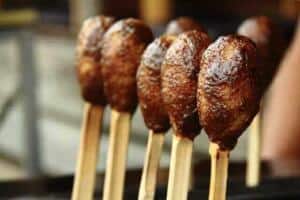
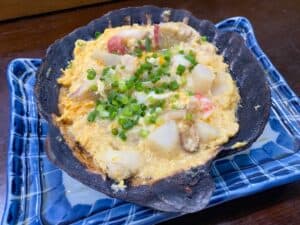







Comments